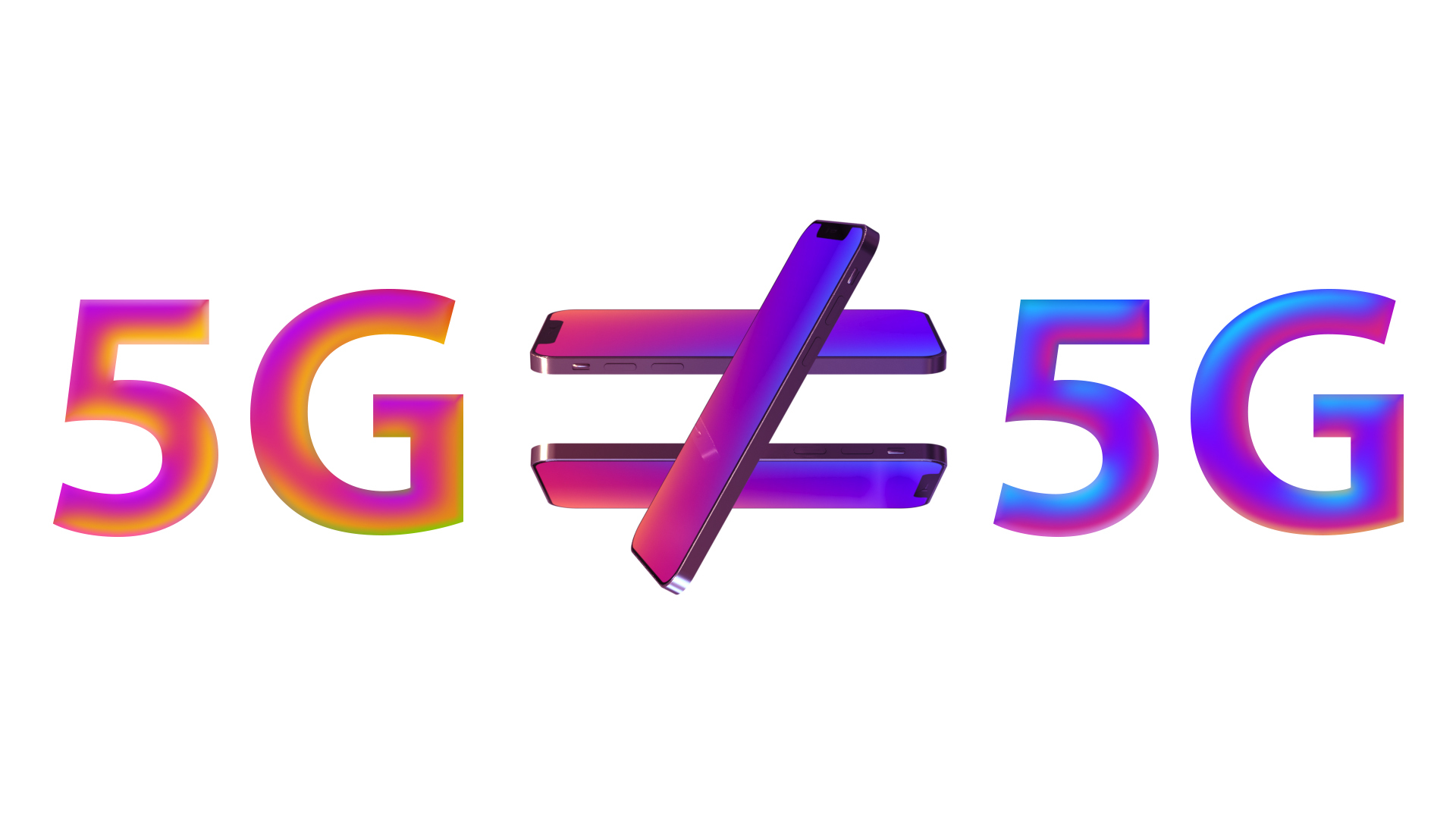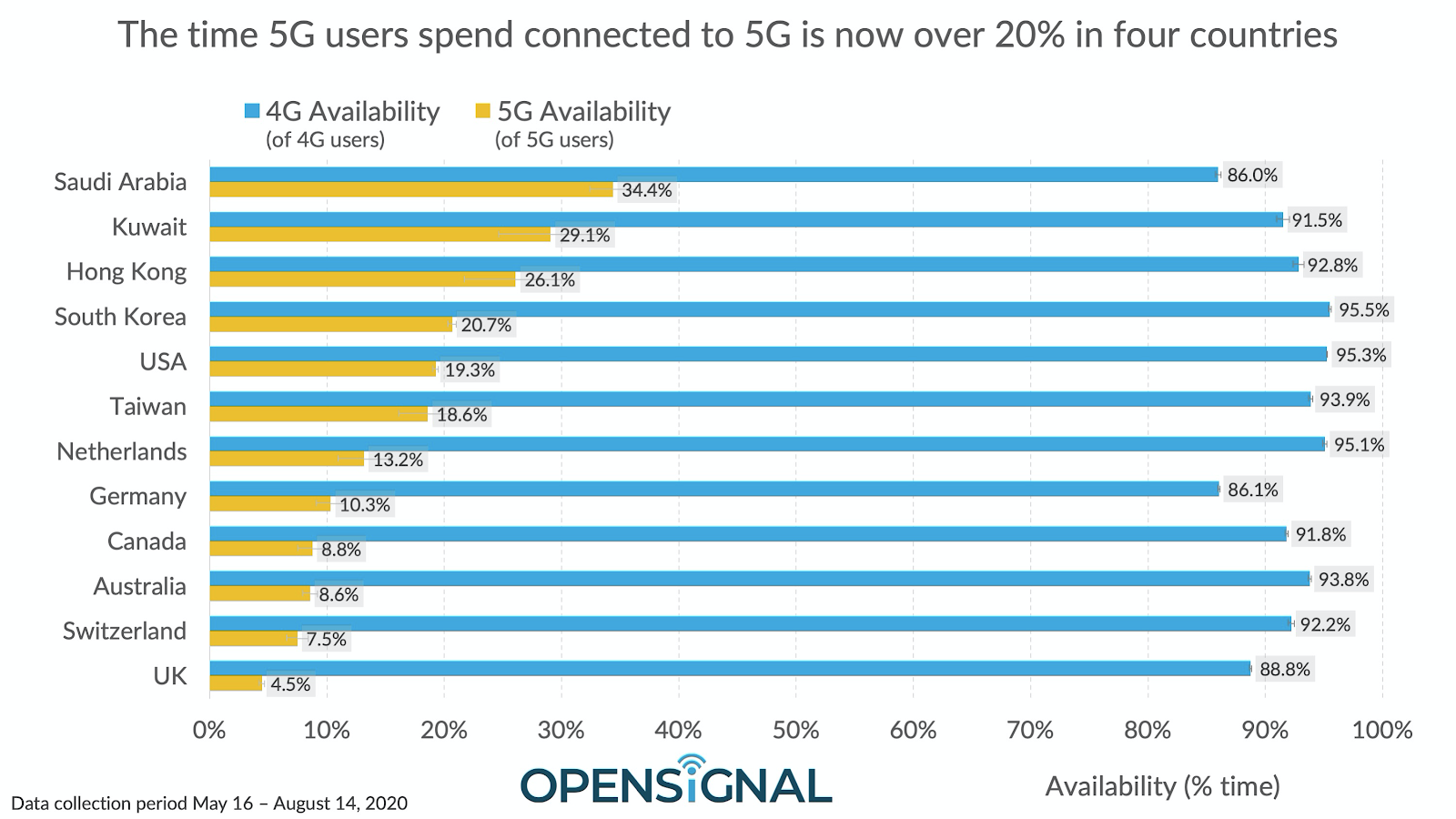
There have been mixed rumors about which iPhone 12 models will support which 5G spectrums, but it appears that the fastest 5G technology could be limited to the higher-end iPhone 12 Pro models, or even just the 6.7-inch version. This guide highlights the differences between mmWave and Sub-6GHz 5G to help you decide between the iPhone 12 and 12 Pro models.
mmWave vs. Sub6GHz Explained
5G is fifth-generation cellular wireless, succeeding the 4G LTE networks that we've been connecting to since 2010. There are two kinds of 5G networks: mmWave, which is the super-fast 5G that most people are talking about when they talk about 5G speed improvements, and sub-6GHz, the 5G that most people are going to experience for the time being.
Smartphones transmit sound and data over the air using electromagnetic radio frequencies, with these frequencies organized into different frequency bands. Some of these bands have more capacity than others and are able to deliver information faster, which is the case with mmWave.
mmWave refers to higher frequency radio bands ranging from 24GHz to 40GHz, and Sub-6GHz refers to mid and low-frequency bands under 6GHz. Low-frequency bands are under 1GHz, while mid-bands range from 3.4GHz to 6GHz and are not considered "mmWave."
mmWave 5G networks are ultra-fast, but they're also ultra-short range. To use mmWave technology, you need to be within about a block of a 5G tower, which isn't feasible in suburban and rural areas. mmWave spectrum is also blocked and obscured by doors, windows, trees, and walls, further limiting its available range, and because it requires so many towers for coverage, it's expensive for carriers to deploy.
Because of its limited range, accessing mmWave spectrum has only become possible over the course of the last few years due to technological advancements like Massive MIMO, adaptable beamforming, and miniaturization of complex antenna processing functions, and mmWave is still nascent technology that's in the process of being adopted.
mmWave's limitations make it best suited for dense, urban areas, or specific targeted spots like airports or concerts. In rural and suburban areas, mmWave technology is not practical because it doesn't have enough range, which is where the Sub-6GHz networks come in. Sub-6GHz 5G is faster than 4G, but it doesn't offer the blazing-fast speeds that you can get with mmWave. Since it has a longer range and can better penetrate objects, it's much more affordable for carriers to implement.
With an iPhone that supports both mmWave and Sub-6GHz, you will be able to take advantage of lightning-quick 5G speeds where mmWave technology is available, while other 5G coverage will be similar to the more modern LTE networks that have been rolling out over the last few years. With an iPhone that only has Sub-6GHz, you'll be able to use the most widely available 5G networks, but will be blocked off from the faster mmWave that might be available in cities.
Over time, low-band and mid-band 5G speeds should get much quicker just like LTE did as it evolved, but those incredibly fast speeds that people expect from 5G are mmWave speeds and are much more limited in availability.
Speed Differences
mmWave spectrum can deliver theoretical speeds as high as 5Gb/s, which is much, much faster than the speeds achievable with LTE connectivity.
In practice, early mmWave networks have been delivering speeds that max out at around 2Gb/s, but as we found when we tested Verizon's mmWave network with a Samsung smartphone in Chicago in mid-2019, speeds vary drastically based on your position and proximity to the nearest 5G tower.
LTE networks are much slower. In fact, Tom's Guide recently looked at LTE speeds and saw top download speeds of 53Mb/s on Verizon, but most carriers were closer to 35Mb/s.
Sub-6GHz networks fall somewhere in between mmWave and LTE speeds. Sprint's Sub-6GHz network (which is now T-Mobile's), for example, has seen maximum speeds of about 200Mb/s. A good LTE connection can hit those speeds, but realistically, Sub-6GHz 5G is faster than most people will see with LTE, though not reaching those incredible speeds possible with mmWave.
OpenSignal in August 2020 analyzed real-world 5G speeds in multiple countries (using smartphones that currently support 5G), and the speed results for the United States might be surprising to those who are expecting major speed gains from 5G. Average download speeds on 5GHz networks were around 50.9Mb/s, compared to 28.9 Mb/s on LTE, and that's because most of the coverage in the U.S. is Sub-6GHz at this time.

Other countries have more advanced 5G networks and can provide some insight into the speed improvements we could realistically see within the next few years. On average, OpenSignal found 5G connectivity to be between 1.4x and 14.3x faster than 4G, but this data does not separate mmWave 5G from Sub-6GHz 5G.
One other interesting metric OpenSignal noted was time connected to 5G networks. In the United States, smartphone owners with devices that support 5G spent just 19.3 percent of the time connected to 5G networks because of their limited availability.

Apple employees that have been testing the 5G iPhones recently (and confidentially) told Bloomberg that the 5G speeds have been disappointing as the current 5G networks are not "improving connection speeds much." Most people who are expecting their iPhones to deliver super-fast mmWave speeds will likely end up similarly disappointed when they find that mmWave networks just aren't available in most places.
mmWave Availability
In the United States, all three major carriers are testing mmWave support, but it's still available in a limited capacity. It's in select major cities and not even citywide - it's limited to select neighborhoods.
With Sub-6GHz, it's already more widespread with AT&T and T-Mobile rolling out lower-spectrum 5G networks that are available to many more customers.
Which iPhones Will Support mmWave?
Early iPhone 12 rumors confirmed that all 2020 iPhones will support 5G networks, but the question of mmWave vs. Sub-6GHz support is something that's still not entirely clear. mmWave 5G technology is expensive and it's power-intensive, both of which mean that it's unlikely to be a blanket feature included in all iPhone models.
Rumors now suggest that the higher-end iPhone 12 Pro models may be the only iPhone models to support mmWave 5G technology, and only in certain countries, because it doesn't make sense to roll out the feature in places where mmWave spectrum just isn't in use.
One recent rumor from Fast Company says that mmWave support will be limited to the 6.7-inch iPhone because it's the only iPhone that has the space for the necessary hardware and a larger battery, so it's possible a single iPhone will have mmWave connectivity to start.
Potential mmWave iPhone Delays
All of Apple's iPhones are launching later than expected, something that Apple confirmed in late July, but even with the delay, rumors indicate we're going to see a staggered launch.
The more affordable iPhone 12 models are expected to come out ahead of the iPhone 12 Pro models, and since rumors suggest the iPhone 12 Pro models will have mmWave support, it sounds like the "Pro" mmWave iPhones are going to come out after the standard iPhone 12 models limited to Sub-6GHz connectivity.
Do I Need the mmWave 5G Connectivity?
In a nutshell, no, most people don't need mmWave connectivity, nor will most people even access to it on a regular basis for the next several years to come.
Full mmWave 5G connectivity is still in the process of rolling out, and it continues to be limited in scope. It's only available in major cities in the United States, and in most of those major cities, it's not available everywhere and is in select areas.
The transition from 4G to 5G started in 2019 and there's still a ways to go, so most people are going to be able to get by without mmWave speeds. To know whether mmWave technology is worth it for you personally, it's a good idea to look up your carrier and see if mmWave spectrum has even rolled out where you live.
Verizon, for example, has 5G in cities like Atlanta, San Diego, San Jose, New York, Providence, Chicago, Omaha, Salt Lake City, Phoenix, and more, but connectivity is limited by specific neighborhoods and landmarks.
Looking just at one city, San Diego, reliable 5G is available in Mission Valley, and other than that, parts of Linda Vista, Kensington, and Banker's Hill, which is an extremely limited area. The same is true of most other cities where 5G is being tested. Verizon has only rolled out mmWave tech at this time, and its sub-6GHz networks are still in the works.
AT&T has rolled out "5G" to 80 million customers in 80 markets, but most of this 5G coverage is not mmWave coverage, and, in fact, is a faster version of LTE that isn't even technically real 5G. AT&T's mmWave network (which it calls 5G+) became available in March 2020 and it can be found in select areas in 35 cities in the United States. Details are available on AT&T's site, but mmWave coverage is as limited as Verizon's right now.
T-Mobile is mostly focusing on Sub-6GHz 5G spectrum, and will limit mmWave technology to dense urban areas.
5G information for the major carriers in the United States is linked below so you can see the coverage for your particular carrier in your area.
If you don't spend a lot of time in one of the specific neighborhoods in one of the cities where your carrier offers 5G technology, you're not going to benefit from mmWave speeds and purchasing a mmWave iPhone should not be a major concern at this time. If you do live in a major urban area with a lot of mmWave 5G towers, you could see benefits from an iPhone that supports the faster technology.
Carriers are, of course, going to continue building out their mmWave networks and in a few years it could be much more widespread, which is a consideration for those who take future-proofing into account when making an iPhone purchase. But even years from now, mmWave is still likely to be limited in scope and available only in more urban areas and Sub-6GHz is the 5G most people will know and connect to.
Keep in mind that some carriers are charging more for 5G right now. Verizon, for example, is pricing 5G plans $10 higher than comparative 4G unlimited plans. AT&T and T-Mobile aren't charging higher prices yet, but that could change as 5G further expands.
Guide Feedback
Have questions about mmWave vs. Sub-6GHz 5G connectivity or want to offer feedback on this guide? Send us an email here. If you want to know more about Apple's 5G iPhone plans, make sure to check out our 5G iPhone guide and our iPhone 12 roundup.
Related Roundup: iPhone 12
This article, "mmWave vs. Sub-6GHz 5G iPhones: What's the Difference?" first appeared on MacRumors.com
Discuss this article in our forums
from MacRumors: Mac News and Rumors - All Stories https://ift.tt/353XcLw

No comments:
Post a Comment